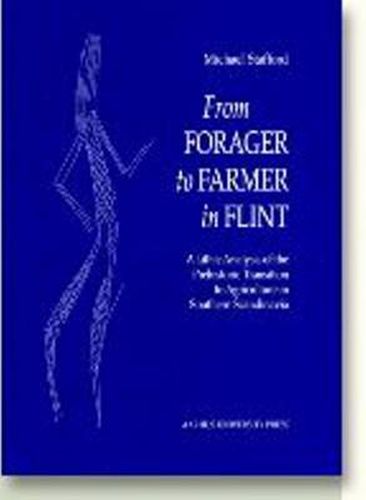Readings Newsletter
Become a Readings Member to make your shopping experience even easier.
Sign in or sign up for free!
You’re not far away from qualifying for FREE standard shipping within Australia
You’ve qualified for FREE standard shipping within Australia
The cart is loading…






Was the transition from hunting and gathering to a life of ploughing and herding sudden, or a result of gradual changes? Was farming forced on local populations by incoming marauders, or was it a logical outgrowth of internal developments? Research in Jutland which provides information on the migration of agriculture into the area is especially valuable since southern Scandinavia was one of the last places in Europe to pass from the Mesolithic to the Neolithic ages. Michael Stafford’s fieldwork into the flint tools of the region provides data that comprises one element of the overall resolution to the above questions. In a prehistoric culture, actual food production involved more than the mere supply of food for one’s own use. Food became a powerful new medium of wealth and social control; some individuals gained prominence; new goods and unfamiliar ideas arrived as surplus food led to trade. By studying lithic materials from the Aamose bog and the Norsminde shell midden, Michael Stafford provides an overview of the flint and flint technology in the Danish transition: site analyses, comparisons and notations of trends through time indicate major adaptations only after the transition was in progress. His conclusion is that the movement from foraging to farming was a movement of ideas (not people) from Europe into southern Denmark.
$9.00 standard shipping within Australia
FREE standard shipping within Australia for orders over $100.00
Express & International shipping calculated at checkout
Was the transition from hunting and gathering to a life of ploughing and herding sudden, or a result of gradual changes? Was farming forced on local populations by incoming marauders, or was it a logical outgrowth of internal developments? Research in Jutland which provides information on the migration of agriculture into the area is especially valuable since southern Scandinavia was one of the last places in Europe to pass from the Mesolithic to the Neolithic ages. Michael Stafford’s fieldwork into the flint tools of the region provides data that comprises one element of the overall resolution to the above questions. In a prehistoric culture, actual food production involved more than the mere supply of food for one’s own use. Food became a powerful new medium of wealth and social control; some individuals gained prominence; new goods and unfamiliar ideas arrived as surplus food led to trade. By studying lithic materials from the Aamose bog and the Norsminde shell midden, Michael Stafford provides an overview of the flint and flint technology in the Danish transition: site analyses, comparisons and notations of trends through time indicate major adaptations only after the transition was in progress. His conclusion is that the movement from foraging to farming was a movement of ideas (not people) from Europe into southern Denmark.